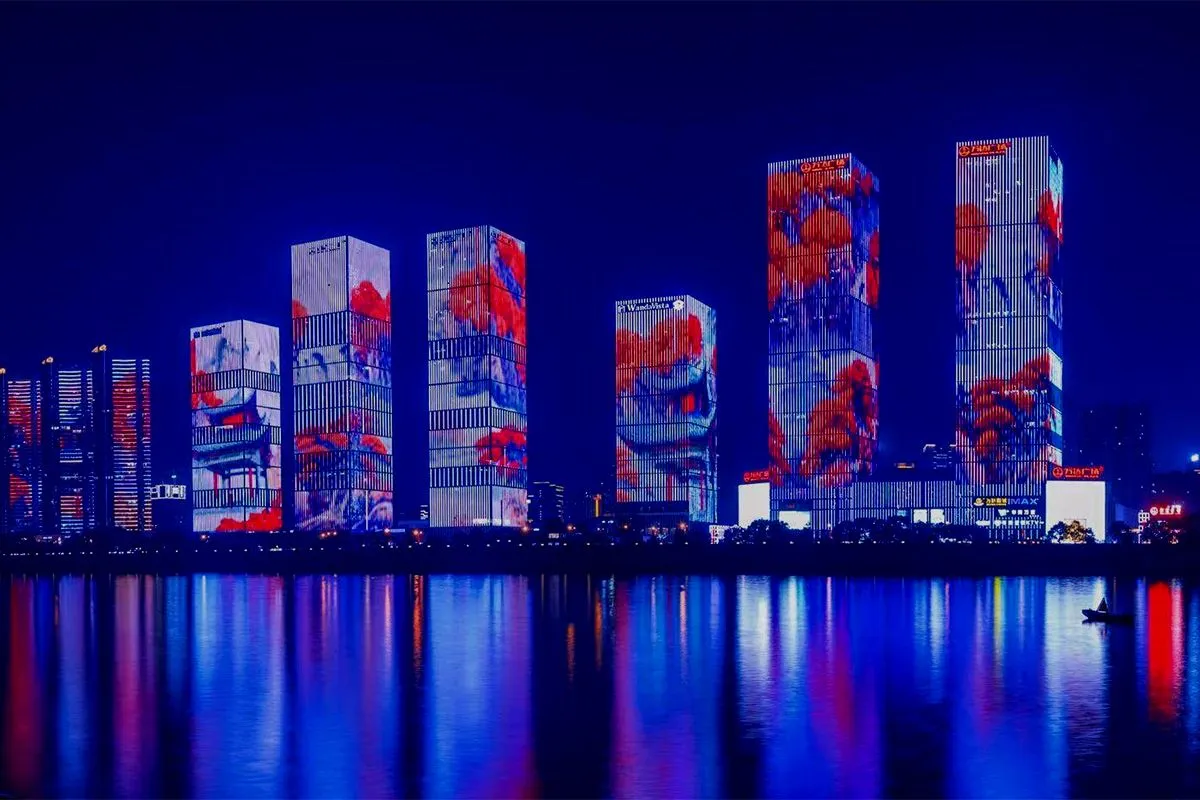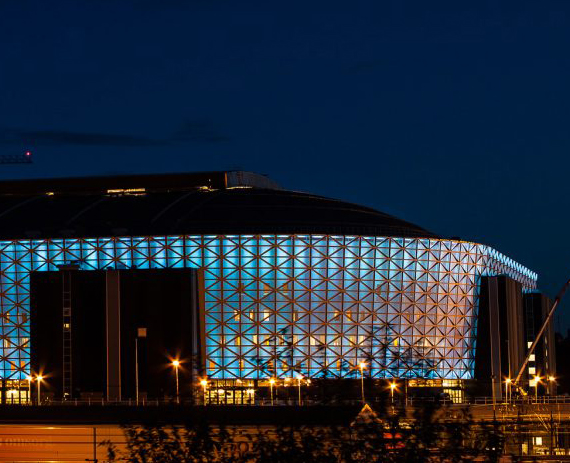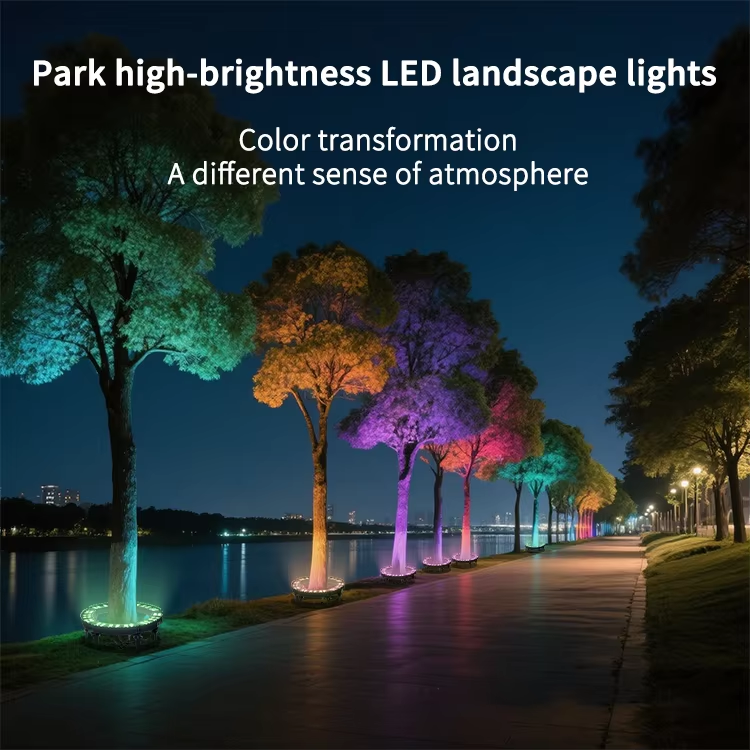Facade Lighting Control: Where Tech Meets Art
When the sun sets, a building does not have to fade into the shadows—it can transform into a living landmark. Facade lighting control systems make this possible by combining technology, creativity, and efficiency. Just like in our guide on what is facade lighting, these systems go beyond simple switches and dimmers, allowing architects, lighting designers, and building owners to manage brightness, color, and timing with precision.
Whether it’s a hotel, a shopping mall, or a city bridge, the right control system turns static illumination into a dynamic visual story. From energy savings to bold artistic expressions, facade lighting control systems are reshaping how we experience architecture at night—making buildings not only visible, but unforgettable.

1. Technical Deep Dive: Protocols, Architectures, and Implementation Realities
The Control Protocol Ecosystem
Understanding the technical landscape is crucial for specifying engineers:
DMX512-A: Still the industry workhorse for high-speed dynamic control, but with practical limitations. "We're constrained by 1,500-foot cable runs without boosters," explains Maria Chen, Senior Systems Engineer at Arup. "For major installations like the Louvre Abu Dhabi's dome, we deployed fiber-optic DMX nodes every 300 meters to maintain signal integrity."
DALI-2: The intelligent choice for medium-scale applications. With support for 64 devices per bus and true interoperability between manufacturers, it's become the backbone of projects like the Edge in Amsterdam. "We're now seeing DALI-2 networks driving 2,000+ luminaires through bridged subnets," Chen adds.
Wireless Mesh: Emerging technologies like Zigbee 3.0 and Bluetooth Mesh are revolutionizing retrofit projects. The Rockefeller Center renovation utilized a hybrid wired-wireless system that reduced conduit requirements by 40% while maintaining millisecond-level synchronization.
Gateway Architectures Matter
The debate between centralized and distributed processing isn't academic – it impacts performance and maintenance:
Centralized: Single high-power processor (often industrial PC-based) controlling all outputs
Distributed: Node-based processing with local intelligence (e.g., Ethernet to DMX nodes)
"The Taipei 101 New Year's display uses a distributed architecture," says Kenji Tanaka of UNStudio. “If one processor fails, the others continue operating – crucial for a 60-story light show viewed by millions.”
2. Efficiency Validated: Data-Driven Results from Real Projects
Quantifiable Energy Savings
Theoretical claims become concrete when examined through case studies:

At the CapitaSpring installation in Singapore (2022), a system of DALI-2 controlled RGBW linear luminaires equipped with daylight sensors was implemented, resulting in a 73% reduction in energy consumption compared to traditional scheduled on/off control. The investment yielded a payback period of just 2.8 years based on energy savings alone.
In 2019, New York’s Hudson Yards deployed a DMX-over-Ethernet system with 18,000 individually addressable points, cutting energy use by 68% while enabling intricate nightly displays. Predictive maintenance also reduced service calls by 85%, aligning with IESNA findings that smart façade controls typically save 60–75% in energy over conventional systems.
3. Creative Engineering: The Science Behind the Art
Precision Optical Control
Advanced systems now achieve previously impossible effects:
Pixel Mapping: The Vessel at Hudson Yards uses 2.5cm pixel pitch fixtures, creating video-quality imagery across curved surfaces. We’ve explored similar applications in our post on architectural lighting design, where light becomes an integral part of the building’s storytelling.
Tunable White Sophistication: The Museum of Modern Art expansion utilizes 16-bit white light control, achieving smoother dimming curves than the human eye can detect. "We matched gallery-quality lighting on an exterior facade," notes the project's lead engineer.
Interactive Systems That Actually Work
Beyond theoretical possibilities – implemented solutions:
Climate-Responsive Lighting: The Copenhagen UN City building changes color temperature based on ambient conditions. Blueish whites during overcast days, warmer tones during clear evenings – all automated through weather API integration.
Crowd-Responsive Scenes: The Plaza Mayor in Madrid uses lidar sensors to detect pedestrian density, gradually increasing illumination as crowds gather while maintaining 40% lower energy use than static lighting.
4. Implementation Truths: What Really Matters On Site

Cable Specifications That Prevent Problems
Electrical Contractor Michael Reynolds states that "90% of field issues stem from cable selection," and emphasizes the importance of using specific cable types to ensure reliability. For DMX applications, his company insists on Belden 9842, which features a foil shield and a drain wire for optimal signal integrity. For DALI systems, they require a minimum cable size of 1.5mm² with a dedicated neutral per group to maintain stable communication. Additionally, for Ethernet installations, they specify the use of CAT6A shielded cable throughout to ensure full PoE+ compatibility and avoid power delivery issues.
Commissioning Realities
The Sydney Light Rail project revealed crucial lessons: "We allocated 320 hours for commissioning but needed 600," admits Project Manager Lisa Wang. "Pixel mapping across curved surfaces requires 3D calibration tools that didn't exist five years ago."
5. The Connected Facade: Lighting as an Urban Data Node
The evolution of facade lighting represents a fundamental shift from isolated installations to integrated urban networks. Building on distributed architectures and precise commissioning, these systems now function as active participants in urban intelligence ecosystems.
Forward-thinking projects demonstrate this transformation. Amsterdam's The Edge shares real-time occupancy data with city traffic networks, creating a feedback loop that optimizes urban flow. Toronto's CIBC Square provides energy metrics to grid operators, participating in demand-response strategies that stabilize municipal networks.
This connectivity transforms static facades into responsive urban interfaces. Systems dynamically adjust based on environmental data streams, modifying lighting levels for weather conditions or synchronizing with natural light transitions. The same distributed architectures that ensure reliability for light shows now manage bidirectional data flow, enabling buildings to respond to civic events and public safety needs.
This evolution positions architectural lighting not as mere decoration, but as functional urban infrastructure that balances artistic expression with civic responsibility, creating buildings that both inspire and serve the cities they inhabit.

Conclusion: The New Baseline for Responsible, Beautiful Design
The question is no longer whether to implement intelligent lighting control, but how to implement it well. For more insights on practical applications, see our article on facade lighting design, which explains how creativity and efficiency merge in real projects. As the data shows, these systems deliver undeniable ROI while enabling architectural expression previously confined to concept renderings. The technical barriers have lowered – wireless protocols, better tools, and experienced integrators now make sophisticated control accessible for projects of all scales.
As we look toward cities filled with responsive, efficient, and beautiful buildings, one truth emerges: the light that moves us emotionally is the same light that makes sense economically.








